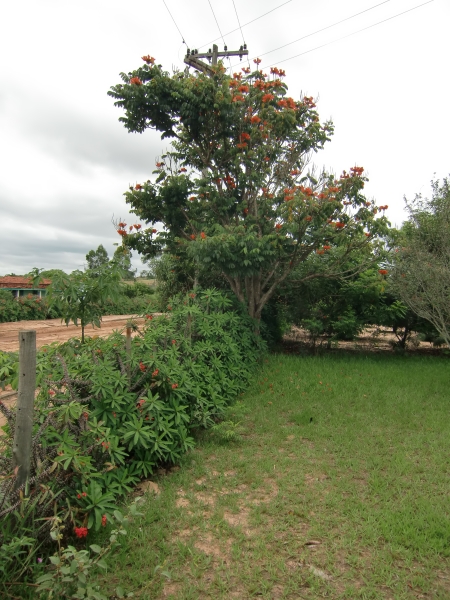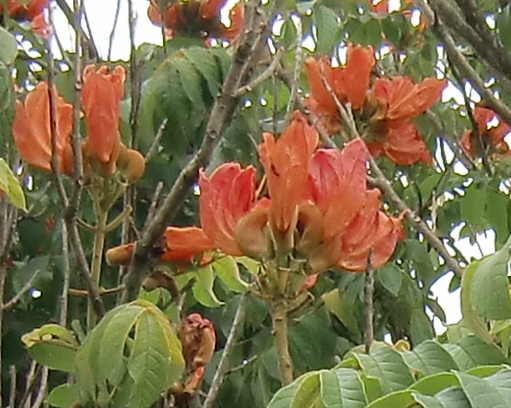

Spathodea campanulata (African Tulip Tree)
The African tulip tree (Spathodea campanulata) is one species from the family Bignoniaceae. It is the only species in the genus Spathodea.
The tree grows up to 70 feet, from West Africa were also reported about species with a height of 100 feet. It grows very rapidly and reached a thick growth of shoot axis from to 2 inches in diameter per year. The trunk reaches a thickness of up to 6 feet.
The leaves are between 1 to 2 feet long pinnate leaves from 5 to 19 leaflets. Each pinna is 3 to 6 inches long, and widths between 1.6 and 3 inches. The underside is covered by rust-colored trichomes.
The flowers are up to 4 inches long and bell-shaped. They are in a terminal panicle. The plant blooms for the first time in the age of three to four years. The color of the bloosom crown varies from red to white to yellow. The petals are light brown wirk dark spots. The four stamens are pale yellow to the brown anthers.
After the flower 6 to 9.6 inches long pod fruits are forming. The seeds are light brown, very light and winged.
The African tulip tree is native to West Africa, it is mostly evergreen, but in Southern Brazil it is deciduous in the drought season in the winter, so that I couldn't recognize my African tulip tree at first.
Because of its attractive flowers of the tree has been cultivated in many places outside of Africa as an ornamental has since run wild, so that today there are many neophyte occurrence. These include: Columbia, Costa Rica, Puerto Rico, Jamaica, Hawaii, Sri Lanka and Guam.
The soft white wood of the tree is partly used for paper production and carpentry. However, old specimens are hollow and endangered of windbreak, they should be planted away from the house. The leaves, its flowers and pieces of bark are used in folk medicine for the manufacture of products for skin diseaes.

African Tulip Tree with flower in our garden in December 2009.

Close-up view of the flowers of the African Tulip Tree in December 2009.
African Tulip Tree in the southern winter 2010,
the tree is deciduous.
Back to the Ornamental Plant List
Updated by Joachim Jaeck on August 1st, 2010